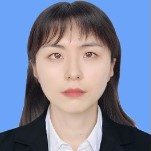Characteristics and Formation of Secondary Organic Aerosols (2nd Edition)
A special issue of Atmosphere (ISSN 2073-4433). This special issue belongs to the section "Aerosols".
Deadline for manuscript submissions: 27 September 2024 | Viewed by 1589
Special Issue Editors
Interests: secondary organic aerosol; biomass burning; gasoline vehicles; source apportionment; anthropogenic
Special Issues, Collections and Topics in MDPI journals
Interests: source emission; secondary organic aerosol; chemical evolution mechanism; mass spectrometry; gas-phase organic compounds
Special Issues, Collections and Topics in MDPI journals
Special Issue Information
Dear Colleagues,
This Special Issue is the second volume of the series of publications dedicated to "Characteristics and Formation of Secondary Organic Aerosols” (https://www.mdpi.com/journal/atmosphere/special_issues/509W9YP1R6) published in Atmosphere in 2023.
Secondary organic aerosols (SOAs), formed from the multigenerational oxidation of gaseous precursors, account for a major proportion of submicron particles. They can directly or indirectly affect air quality, climate change and human health. However, current atmospheric models usually underestimate the measured SOAs due to missing precursors, formation mechanisms and the uncertainty in SOA yield. Although great efforts have been made in the last few decades, a great discrepancy still exists in the modeled and measured SOAs due to the complexity of the precursors and formation mechanisms. There are many factors that may affect SOA formation, many of which may act synergistically or competitively. Therefore, there is an urgent need to establish the chemical and physical properties of SOAs, both from gas-phase precursors and from particle-phase evolution as a function of atmospheric conditions such as RH, temperature and aerosol acidity. A better understanding of the SOA formation mechanisms and characteristics will help to improve the prediction of aerosol loading and help mitigate air pollution around the world. The aim of this Special Issue is to present recent advances in the field of SOA formation. This topic encompasses SOA precursors from different sources, generated SOAs, and SOA follow-up effects.
For this Special Issue, the topics of interest include, but are not limited to:
- Chemical components of precursors and their contribution to SOAs
- Chemical and physical characterization of SOAs in different environments
- Formation and evolution mechanisms of SOAs
- SOA formation from different sources
- Distribution and characterization of different SOA precursors
- The environmental impact and health effects of SOAs
Dr. Rongzhi Tang
Dr. Wenfei Zhu
Guest Editors
Manuscript Submission Information
Manuscripts should be submitted online at www.mdpi.com by registering and logging in to this website. Once you are registered, click here to go to the submission form. Manuscripts can be submitted until the deadline. All submissions that pass pre-check are peer-reviewed. Accepted papers will be published continuously in the journal (as soon as accepted) and will be listed together on the special issue website. Research articles, review articles as well as short communications are invited. For planned papers, a title and short abstract (about 100 words) can be sent to the Editorial Office for announcement on this website.
Submitted manuscripts should not have been published previously, nor be under consideration for publication elsewhere (except conference proceedings papers). All manuscripts are thoroughly refereed through a single-blind peer-review process. A guide for authors and other relevant information for submission of manuscripts is available on the Instructions for Authors page. Atmosphere is an international peer-reviewed open access monthly journal published by MDPI.
Please visit the Instructions for Authors page before submitting a manuscript. The Article Processing Charge (APC) for publication in this open access journal is 2400 CHF (Swiss Francs). Submitted papers should be well formatted and use good English. Authors may use MDPI's English editing service prior to publication or during author revisions.
Keywords
- secondary organic aerosol
- source apportionment
- chemical evolution mechanism
- source emission
- semi-volatile/intermediate-volatility organic compounds






